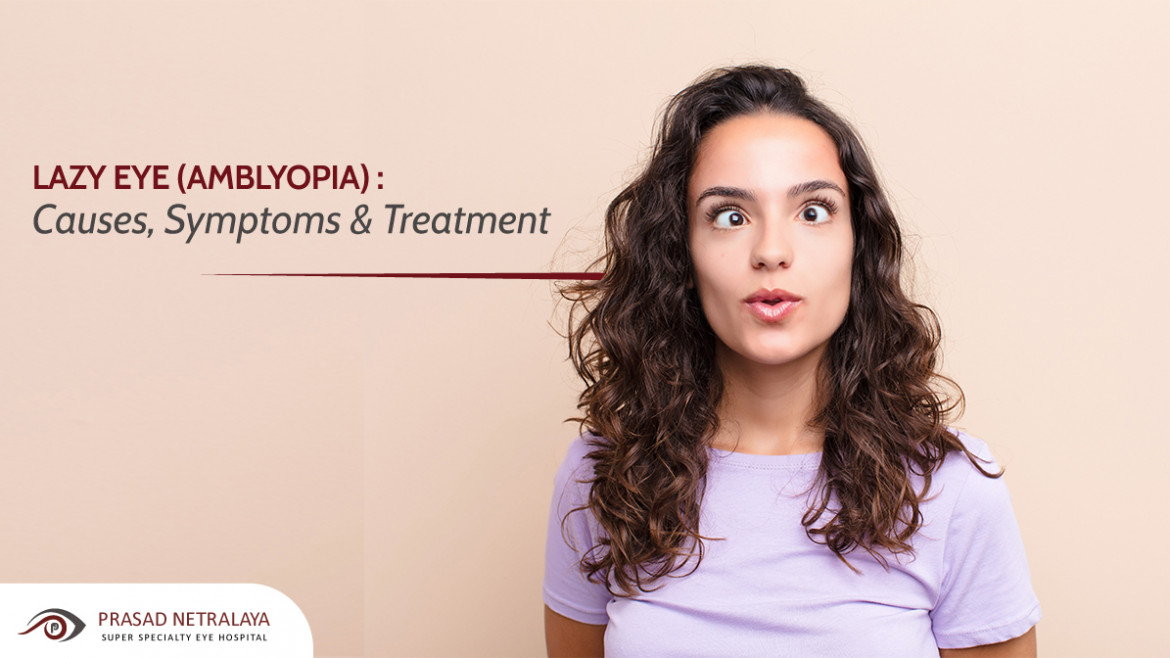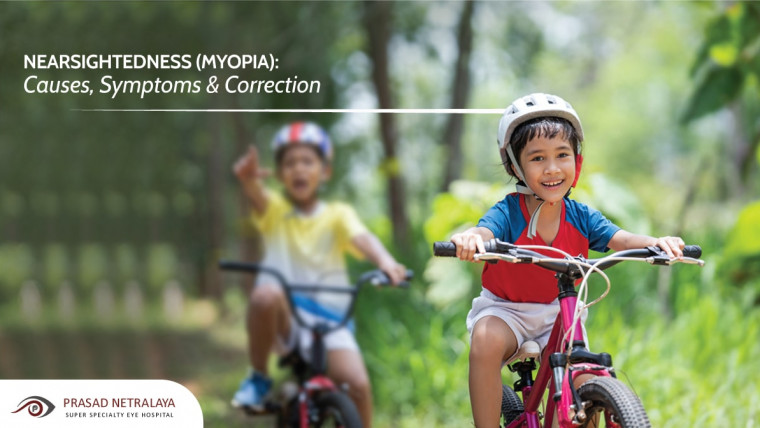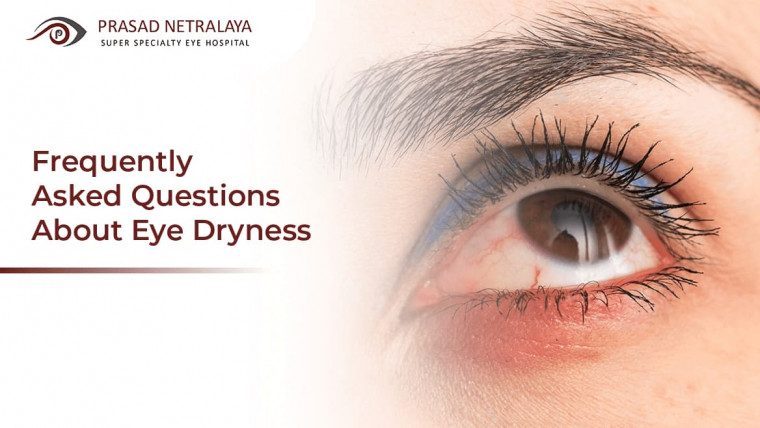When someone does not do his job well, he is often called a ‘lazy person’. Similarly, when the vision in one eye reduces for some children or even adults, it means the eye can’t perform its function well. And this eye is known as the ‘lazy eye’.
Table of Contents
What Is a Lazy Eye?
A ‘lazy eye’ is when the vision in one of your eyes is reduced due to abnormal visual development. It is rare for both the eyes to have it. The weaker eye — often called the lazy eye — wanders inward or outward. The condition is also referred to as amblyopia.
Amblyopia is one of the major causes of decreased vision among children. It occurs when one eye becomes weaker than the other during infancy or childhood, typically developing between birth to the age of 7.
What Are the Symptoms of Lazy Eye?
Some common symptoms of lazy eye or amblyopia include:
- Squinting
- Shutting one eye
- Trouble telling how near or far away something is (depth perception)
- Head tilting
In some rare cases, amblyopia is not discovered until the eye doctor diagnoses it with an eye examination.
What Causes Amblyopia?
Ophthalmologists don’t always know the cause of a lazy eye. Yet, some causes that could lead to amblyopia are:
- Refractive Errors: Refractive errors include eye conditions like myopia or nearsightedness, hyperopia or farsightedness, and astigmatism. They affect the way your eyes bend (refract) light. If one eye has any of these conditions, the other eye may have much better focus. When the brain gets a blurry and a clear image together, it starts to ignore the blurry one and this eye gets weaker with time. Normally, refractive errors can be fixed with eyeglasses or contacts.
- Strabismus: Your eyes usually move together as a pair when they see something and focus on it. But if you have strabismus, both your eyes don’t line up together. One could turn inward or outward — so they can’t focus on an image together, and your brain will ignore the image from the eye that is not aligned. This makes the ignored eye weaker.
- Cataracts: The eye condition causes cloudiness in the lens of the eye, which could make things look blurry. The eye with the cataract may have hindered vision development and in turn, lead to a lazy eye. Most cataracts happen in older people, but babies and children also can develop them.
- Ptosis or Blepharoptosis: A drooping eyelid can block your vision and cause amblyopia. The condition is called ptosis, also referred to as blepharoptosis.
Can Amblyopia Be Corrected?
Lazy eye is usually treatable and responds well to corrective strategies. If you have a vision problem that’s causing amblyopia, eye doctors may treat that first. Children or adults with nearsightedness or farsightedness may be recommended eyeglasses or contact lenses, and ones with cataract may be recommended surgery.
Then, the brain is re-trained and forced to use the weaker eye, so that it becomes stronger Some methods used for the treatment of amblyopia include:
- Wearing an Eye Patch: By covering up the stronger eye with an eye-patch that can be stuck on like a band-aid, the brain is forced to use the weaker eye more. Some children are asked to wear the patch for 2-3 hours a day, while others may be asked to wear it throughout the day when they’re not asleep.
- Putting atropine eye drops: Putting an eye-drop of atropine once a day to the stronger eye can temporarily blur its near vision and force the brain to use the other eye. Some parents find it easier to use this method as young children may try to pull off eye patches.
- Surgical Treatments: Sometimes, there may be a surgery required to treat strabismus causing amblyopia. This treatment for a lazy eye makes the eyes line up better, by either loosening or tightening the muscles as needed.
- Vision Therapy: The visual abilities of the eye with amblyopia are improved with vision therapy to enhance fixation, accommodation (focusing), saccades, pursuits (eye-tracking) and eye-hand coordination (spatial skills). The therapy also helps reduce the frequency of patching.
- Perceptual Learning: This mode of treatment is often used for adults with amblyopia. Research has shown that certain residual plasticity exists in the adult visual brain, and it can be leveraged to improve vision in adults with amblyopia. Certain perceptual training methods and protocols have been developed to enhance visual gains, and practising certain visual tasks leads to a significant improvement in performance.
With early diagnosis, lazy eye treatment is possible. If you feel your child is showing symptoms of a lazy eye, make sure he/she gets an eye examination at Prasad Netralaya in Mangalore or Udupi. We have qualified ophthalmologists to help your child improve their vision. Call us at +91 9513596565 or book an appointment if you wish to visit in person.
Dr. Vikram Jain, M.S. had his medical training (MBBS) from Kasturba Medical College, Mangalore, India. He did his master’s in Ophthalmic surgery from Kasturba Medical College, Manipal. He currently manages the Glaucoma department of Prasad Netralaya hospital.



